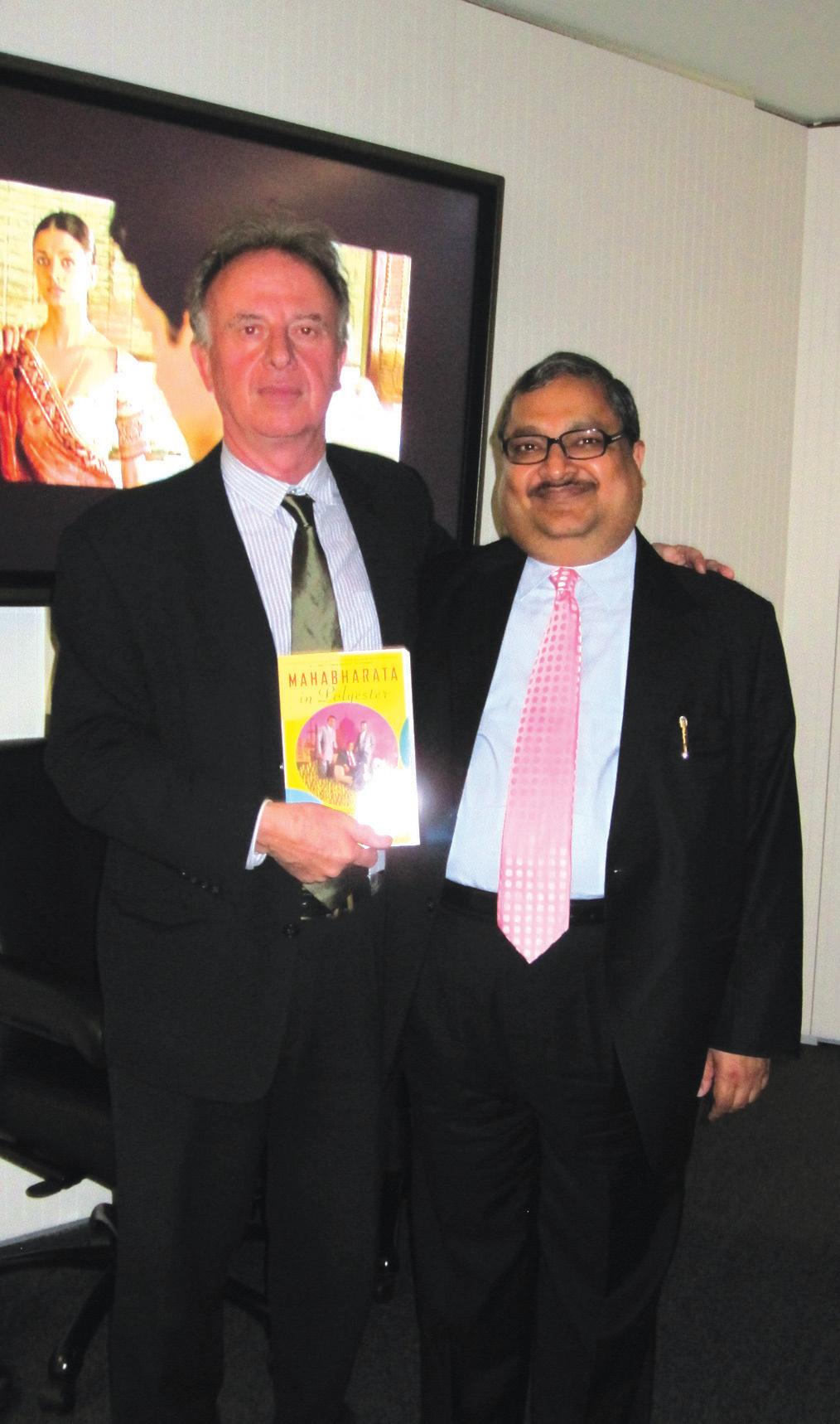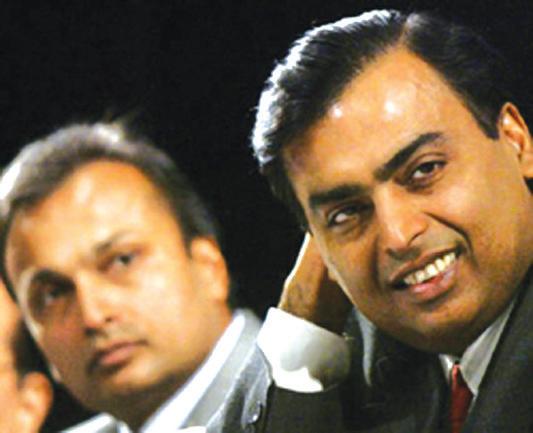
6 minute read
An epic tale of two brothers
from 2010-10 Melbourne
by Indian Link
This must-read book chronicles the history of a corporate Kurukshetra that’s still unfolding
BY MAMTA SHARMA
The Indian business family of Ambanis needs no introduction. After the release of the Bollywood film Guru (2007), the inspiring rags-to-riches story of Dhirubahi Ambani has become legendary. His company Reliance, which emerged from the textile industry, is now one of India’s major corporations.
From humble beginnings at Chorwad in Gujarat, Ambani learnt life’s lessons early. As an ambitious entrepreneur, he ruthlessly embraced all capitalism had to offer, and went on to become one of India’s richest men, despite his own superstitions, the politics of his country, his investments (both legitimate and clandestine) and his corruption of politicians and officials. His textile company Reliance was one of the first to produce polyester in India and has continued to grow and expand since.
Following Dhirubhai’s demise in 2002, his sons, Anil and Mukesh took over their family empire Reliance, split it in two and went separate ways. Thus began the feud between the World’s Richest Brothers. Their respective arms of the company are bigger than the parent company ever was. The brothers are now worth $43 billion and $42 billion respectively, largely from petrochemicals, telecommunications and entertainment. The hostility, arguments and tension between the Ambani brothers is wonderfully analysed and examined by Australian writer Hamish McDonald in his latest book Mahabharata in Polyester: The Making of World’s Richest Brothers and Their Feud.
McDonald, a former New Delhi bureau chief for the Far Eastern Economic Review, is currently the Asia-Pacific Editor of The Sydney Morning Herald and has authored several books on Indonesia and India.
His book Mahabharata in Polyester was launched in Sydney recently by Arun Kumar Jagatramka, Chairman of Gujarat NRE Minerals Ltd, the Indian entrepreneur who has revitalised the Illawarra coal industry. The book is a wonderful narrative of the trails and tribulations between the Ambani brothers, Jagatramka said at the launch. In reference to the title of the book, the Indian entrepreneur said, “It’s an apt title as the Mahabharata is one of major Hindu epics of India. It is about the Kurukshetra War and the fates of the brothers, Kauravas and Pandavas, something similar to the story of the Ambani brothers. It gives an insight into modern India. I would want my children also to read it.”
From the same region in India as the subjects of this book, the Ambani family, Mr Jagatramka reflected on their legacy, the business outlook for India’s emerging giant economy, and the opportunities and challenges for Australia. “The Indian businessman creates favourable environments for his venture and when he is unable to do so he converts the unfavourable into a challenging opportunity.”
Mahabharata in Polyester is said to be the revised story of The Polyester Prince, McDonald’s first controversial publication on Dhirubhai Ambani in 1998. The Polyester Prince offers an account of Ambani’s rise from a school teacher’s son to the head of the biggest polyester and petrochemicals company in India. It touches upon the rivalry between Ambani and Bombay Dyeing’s Nusli Wadia, Reliance’s financial expertise especially in raising money, and the company’s ability to manage the external environment. The Ambanis however, didn’t think the book would do them any good and approached a court in India against it. The court sent a notice to HarperCollins, the book’s publishers, which admitted before it that the the author has trimmed the older material by around 20% and expanded the material to focus more on the feuding brothers and offering key insights into India’s transformation into a global economic powerhouse.
“Big brother Mukesh Ambani seemed to have learned more from his father and has often taken the upper hand in the squabbles with his brother,” McDonald says in his latest book.
“There was also a curious rolereversal. Mukesh had become the high-life socialite, with estimates of the cost of building his (high-rise mansion in Mumbai) Antilla getting ever larger despite his attempts to downplay them,” he adds.
About Anil Ambani, the author says, “The perceived playboy Anil was portrayed as more ascetic, making frequent pilgrimages to Hindu shrines, even journeying on foot to circle the holy Mansarovar Lake and Mount Kailash in Tibet.”
“He ran daily for kilometres before dawn and stayed in cheap business hotels instead of luxury suites on his travels.”
On the infamous years-long succession battle that led to the division of Reliance empire, he says that communication between them came down to stiff press comments by spokesmen and a mounting number of court actions.
“However, both were said to put on a display of politeness at weekly breakfasts with their mother at Sea Wind (the Ambani residence in Mumbai).”
When asked who he thinks is better of the two Ambani brothers, Mc Donald reveals, “The pen-portraits of the Ambani brothers in the book makes clear that they have differing personalities and mixes of strengths. I don’t think you can measure relative success by comparing their group earnings or their networths. They are in sectors where success has different yardsticks -for example, Anil’s media and entertainment arm where results are not just dollars and rupees but in creative achievement, an intangible”.

To say that the sibling tycoons are not close is an understatement; their feud - personal and business - is an extraordinary story in itself. But as McDonald’s latest book shows, the Ambani saga tells a bigger story about modern India, not only as an economic powerhouse but about the complicated links between government and big business.
Do these complicated links leave the general public at a loss in the long run, or are the arrangements good for all?
McDonald replies, “I think the Indian public is the loser, because the Indian government has been strong or assertive in the wrong things like trying to direct investment, and weak in the things where it should be strong and respected, like enforcing rules of corporate behaviour. India needs simpler rules and better resourced agencies like the Securities and Exchange Board of India to monitor compliance.”
The book comes incidentally within months of reconciliation between the two brothers.
The Ambanis, however are not the only billionaires in India. So what was it that inspired McDonald to script the sequel to his earlier book on Ambanis and not go for some other millionaire’s story?
“Because the Ambani story wasn’t finished - it only got more interesting,” says Mc Donald. “The last few years of Dhirubhai’s life saw him fulfill his dream of building a huge oil refinery. Then the group diversified into new sectors like mobile phones. Then there was the almost incredible public rupture between Mukesh and Anil over 2004-5, the division of the Reliance group, and the feuding that followed. There simply aren’t hotter stories in Indian business. But there are many other interesting
The author says his interest in the Ambanis experienced a revival when he was holidaying in India in December 2004, when the split between the Ambani brothers became news. And he began collecting material.
The book is an outsider’s account, he confesses. “I realised that the political economy, the intersection of business and government, was relatively unexplored. That it was a touchy subject for domestic writers indicated it was an area where I might actually expand understanding of contemporary India,” he notes.
Despite his efforts to reach out to the Ambanis for his sequel, no one from the two groups meet with McDonald. “I made approaches to both brothers during the research period, but got no response. I did try to include as much of their own direct words as possible within the flow of the narrative”.

Talking about the challenges he faced while writing/ getting information for the book, the author says, “For the update the biggest handicap was obviously that I was no longer living in India, but getting my information from published sources, long distance contacts, and the occasional visit to Delhi and Mumbai. So the excitement of being a witness to the events, and walking the territory, is perhaps not so strong.”
In India, biographies of businessmen are usually authorized versions commissioned by the business houses themselves - sanitised and censored. Independent biographies are not too common. McDonald’s experience with his book on Dhirubhai Ambani is a good example of what would happen to authors who dare to be frank and independent.
However, McDonald is hoping for better luck with the sequel for its release in India this time.
“This new book is being published by Roli Books in a special Indian imprint, under the title Ambani & Sons and with a different cover. So far, so good,” the author says with hope.
Media reports say that despite going on sale only this month, pirate copies have already been sighted on the streets of Mumbai.








